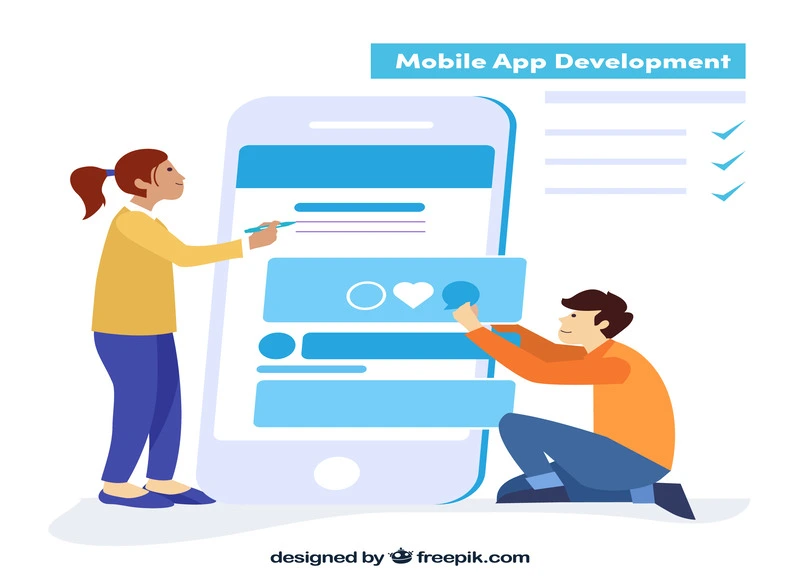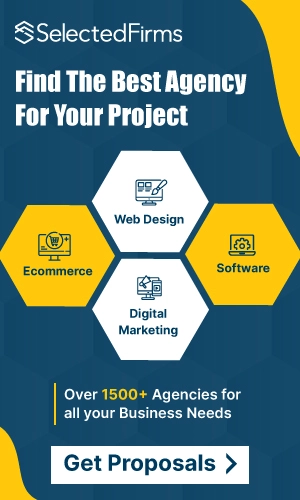- Home
- Blogs
You Have Created an App: What Now? Steps to Take
Uncover the next steps after app creation. Our comprehensive guide offers valuable tips on launching, marketing, and improving your app for maximum impact.

Firstly, congrats and good wishes on entering the final stages of app development! But besides focusing on how the app looks and feels, there’s plenty left to do to achieve success. You might have already been generating some buzz about your product. Demos and short sneak peeks help people get invested in upcoming projects. So, what strategy should you take when you’re close to achieving your goal? Let’s explore the steps you can consider to make your app successful!
Know your targeted audience
You have probably already touched upon the topic of your target audience. For example, defining your potential customers as gamers is not enough if you're developing a game. Such specifications are too broad, and you must go deeper to see a fuller picture.
Here are some tips for finding your ideal audience:
- Try mapping the ideas of who will be the most interested in playing your game. That includes demographics and general interests.
- Analyze the competitors that have released games in the same genre. You’ll like to find information about their player statistics. So, you can figure out who already enjoys this type of gameplay.
- The more market research you do, the better. Besides your target audience, you will discover what types of features could be your selling point.
- Visit forums that include players of your competitors’ games. People will likely share their unfiltered opinions about the game and what could be better.
The Earning Model
The way your app makes money depends on your strategy. For example, you could offer a paid app, meaning people need to buy it to use it. However, there’s a reason why so many apps come free. After all, different options generate money even without accepting direct payments. Ads are one of the most popular things that developers choose to integrate.
However, finding the perfect way of app monetization has become easier nowadays. You can use different SDKs (Software Development Kits) to help add specific monetization strategies. In other cases, you can go for in-app currencies that users can buy to get certain features or boosts.
Don’t Skip on Testing
Getting your app on the virtual shelves is exciting, but you should not avoid testing your product. Bugs and other functional issues could force your users to turn the other way, so it’s crucial to run usability and performance tests.
Ensure that everything works as intended. Also, don’t neglect user security and privacy, especially if your app involves payments. Furthermore, beta testing could help you spread the word about your app and involve interested people in its development.
Learn More About App Store Listings
You likely have already reviewed all the procedures necessary to add your app to the Google Play or Apple Store. Yet, you should also spend some time writing your listing. If necessary, hire experienced specialists to do it. After all, app store optimization strategies could help you rank higher in your category and attract more clients.
Developing a Marketing Plan
A thorough marketing strategy should be in place before the launch. This strategy should have a timeline for pre-launch activities, launch day preparations, and post-launch follow-up.
Pre-Launch Marketing: Begin creating your audience as early as possible. Build anticipation via teaser campaigns, countdowns, and secret peeks.
Influencer marketing: as previously discussed. Collaborate with influencers who speak to your target audience. Their endorsement can dramatically boost your app's visibility.
Content Marketing: Write blog entries, make videos, or even start a podcast to explore topics relevant to your app's niche. This can increase organic traffic and establish authority in your industry.
Be Open About Your Journey
Bigger companies developing apps might only need a little effort to create buzz about their new product. Yet, you will need to spend more time if your team is small. Run social media campaigns, share posts, and excite people about your work. After all, many social media users have mastered using social media for marketing. But besides this, consider these options as well:
- Collaborating with content creators (they could promote your upcoming product to their audience). Plus, social media is the best tool today to market your product and create hype with the help of the right influencer who can attract your audience.
- Have an official website or perform basic SEO strategies and target relevant keywords that fit your target audience.
- Run some PR articles (try sending them to various platforms). Collaborate with the right brands to run your PRs for promotion who have a broader reach worldwide.
- Find a way to start an email marketing campaign. There are a variety of tools and software through which you can track your progress and check day-to-day clicks and other parameters. Run your campaign aggressively to promote your brand.
Post-Launch Strategy
- Continuous Updates: After launch, monitor user input and swiftly address any issues. Regular updates will keep your software working smoothly and your customers satisfied.
- Customer Support: Set up a working customer support system. Whether through chatbots, emails, or a helpdesk, make it easy for people to get support.
- Future Features: Continue to evolve your app by planning new features and updates. Test these on social media to keep people interested and excited.
Leveraging Analytics
Use analytics to track and measure your app's performance.
User Behavior Tracking: Use Google Analytics or Firebase to learn how people interact with your app. This information can help inform future improvements and marketing initiatives.
Key Performance Indicators (KPIs) include user retention rate, lifetime value (LTV), and conversion rates. These metrics can help you assess the health of your app and suggest areas for improvement.
Cohort Analysis: Group users based on similar traits to see how different segments behave over time. This can provide insights into the most valuable user categories and how to attract more of them.
Legal and Compliance Considerations
Ensure that your app meets all applicable legal standards.
Privacy Policies: If your app collects user data, ensure it has a clear and understandable privacy policy. This is not only a legal duty but also builds user confidence.
GDPR and CCPA Compliance: If your app is available in Europe or California, it must comply with GDPR and CCPA standards. This involves granting users control over their data and guaranteeing its security.
Intellectual Property: Protect your app’s unique features and content by registering trademarks, copyrights, or patents where applicable.
Exploring Partnerships and Collaborations
Consider developing partnerships to broaden your audience and improve your app.
Strategic Partnerships: Collaborate with various brands that complement your app. For example, a fitness app and a sportswear manufacturer can collaborate on reciprocal promotion.
Co-branding Opportunities: Partner with other applications or services to develop joint promotions or packages. This can help you reach new audiences while adding value to your service.
Affiliate Programs: If your app is suitable, consider creating an affiliate program where users can earn rewards for referring new users.
App Monetisation Strategies
Expand on the monetization options by reviewing the benefits and disadvantages of certain tactics in greater depth.
Freemium Model: Explain how offering a free version with limited functionality can attract customers, with the possibility to access premium features via in-app purchases.
Subscriptions provide a continuous revenue stream. Discuss various pricing tactics, such as monthly vs. yearly plans, and how to deliver value worth the price.
In-App Advertising: Learn more about the different forms of in-app adverts (banners, interstitials, and rewarded videos) and how to deploy them without disturbing the user experience.
Keep the Project Running
Even after the official release, take time to address users’ concerns. For instance, you can do so by responding to common issues and issue updates to solve problems effectively or fix bugs. The most crucial thing is interacting with your users. You can do so by adding a customer support option, but that also requires some additional people to manage incoming requests.
So, you will be busy fixing your work for some time after the app release. Then, once everything settles, you can start thinking about new features. It’s even better if you already have some plans in progress on this subject. You can create anticipation by mentioning what’s to come on social media!
Conclusion
The path to success after releasing an app depends on many factors. These include your general preparation, testing efforts, marketing strategies, and eagerness to improve. However, other factors, like the market, could also play a role.
Even the release date could make or break your product. Avoid settling on dates that coincide with app releases from well-known companies. They could overshadow your product, shifting all the media and user attention one way. Finally, remember that the release is just the beginning. You’ll need continuous learning and adapting to keep the project running effectively!

